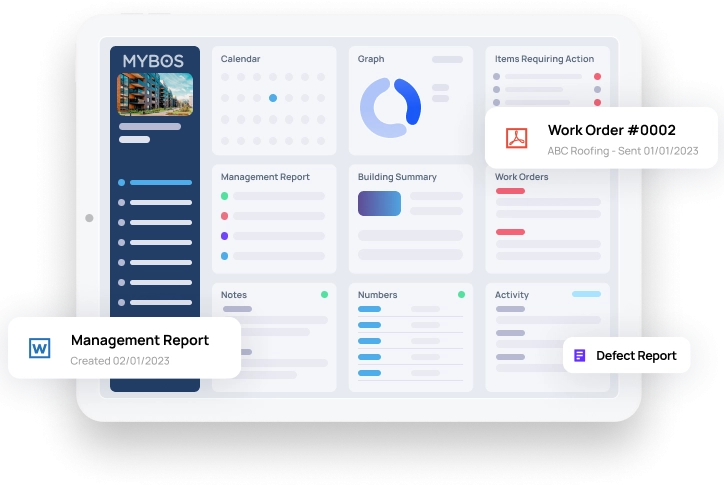
From Siloed to Smart: Integrating Your BMS with Third-Party Smart Tech
Building Management Systems (BMS) are no longer standalone control centres—they’re the digital backbone of smart buildings. Yet, many buildings and facilities still operate with siloed systems that can limit performance, efficiency, and innovation. If your BMS isn’t talking to your smart devices, you’re not getting the full picture—or the full value.
Honeywell highlights how cloud‑based BMS platforms simplify integration by using open‑standard protocols (like BACnet) and vendor‑agnostic architectures. These systems enable real‑time data sharing across subsystems, enhancing energy optimisation, uptime and cybersecurity.
By integrating your BMS with third-party smart technologies—like energy analytics, IoT sensors, and automated maintenance platforms—you can create a seamless, intelligent environment that adapts, responds, and performs. For property managers, leveraging building management software is often the first step towards unlocking these integrations, ensuring your BMS evolves into a central hub for innovation.
So how can building managers move from fragmented systems to fully integrated solutions? Let’s explore how BMS integration solutions can bridge the gap.
Why BMS Integration Matters
A Building Management System (BMS) delivers the greatest value when it can integrate with other systems and devices. This includes HVAC, lighting, access control, and IoT-enabled sensors. Integration allows these components to share data, automate tasks, and respond intelligently to changing conditions.
Operating a BMS in isolation limits these capabilities.
According to Deloitte, the evolution of BMS technology occurs in three stages: standalone systems, partially integrated systems, and fully integrated, IoT-enabled platforms. At the final stage, sensor data from across a facility—such as occupancy, temperature, and air flow—feeds into a central system that supports predictive maintenance, energy optimisation, and improved occupant comfort.
Once systems are connected, you gain a powerful central “brain” driving smarter, more sustainable building operations.
Key Benefits of Building Management System Integration
For building or facility managers considering a smart upgrade, here are some of the core benefits of moving towards integrated building systems:
- Centralised Control: A unified system offers streamlined oversight of all building operations in real-time.
- Energy Efficiency: Integrating smart sensor compatibility with BMS can enable adaptive lighting, heating, and cooling based on occupancy and usage patterns.
- Improved Fault Detection: Automated alerts help pre-empt maintenance needs.
- Better Data Insights: Enhanced reporting and data analytics for smart building technology support proactive decision-making.
- Sustainability and Compliance: Supports environmental standards and smart city initiatives.
Read more about The Top 5 Smart Home Upgrades That Add Value to Apartment Buildings
Third-Party Smart Devices for BMS: What Can You Integrate?
A modern Building Management System (BMS) can integrate with a wide range of third-party smart technologies to enhance operational visibility, automation, and control. Common integrations can include:
| System | Function | Example |
| HVAC Systems with Smart Thermostats | Connect thermostats, zone controllers, and occupancy sensors to automatically adjust temperature based on real-time usage. | Example: A smart thermostat lowers heating in unoccupied meeting rooms, reducing energy waste during off-peak hours. |
| Smart Lighting Systems | Integrate with motion sensors, daylight sensors, and scheduling tools for automated lighting control. | Example: Lights in a multi-story car park turn off when no movement is detected for 10 minutes, cutting unnecessary power use. |
| Access Control and Security Systems | Combine entry data with occupancy and lighting control to trigger pre-set building responses | Example: When the last employee badges out, lighting and HVAC in that zone automatically shut down. |
| Energy Monitoring Devices | Link smart meters and sub-metering systems to track consumption in real time and identify anomalies. | Example: A sudden spike in energy use alerts the facility team to a possible equipment malfunction in the HVAC system. |
| Water and Air Quality Sensors | Integrate with ventilation and plumbing systems to manage IAQ and leak detection. | Example: A CO₂ sensor triggers increased ventilation when levels exceed the healthy range in a conference room. |
| Elevator and Escalator Monitoring Systems | Monitor performance, usage, and fault alerts through integration with central dashboards. | Example: An escalator reports increased vibration data, triggering a predictive maintenance alert. |
A well-integrated BMS not only makes buildings smarter but also significantly more efficient. Explore how smarter access systems can also contribute to operational efficiency with The Evolution of Building Access Systems: From Keycards to Smart Tech.
Common Integration Challenges and How to Overcome Them
Integrating a Building Management System (BMS) with various third-party technologies presents several common challenges, especially in older or mixed-use buildings:
- A common issue is lack of interoperability, as many devices and systems use proprietary protocols that don’t easily communicate with newer platforms. Overcoming this may require additional tools like protocol converters or collaboration with integration specialists.
- Additionally, data inconsistency or overload can occur when systems produce information in different formats or time intervals, making it difficult to achieve reliable insights or automation without a standardised data framework.
- Other key obstacles include cybersecurity risks, which rise as more devices connect to central networks—especially over the internet. Poor security practices can leave systems exposed to threats, so building teams must implement secure protocols, network segmentation, and authentication measures.
- Budget constraints and technical skill gaps also create friction. Some facility teams struggle to justify upfront costs or lack the expertise needed to manage complex integrations, though these can be addressed through ROI modelling, phased rollouts, and training.
- Integration efforts can also fall short due to poor planning or undefined goals. Without a clear vision of what the integration should achieve—such as energy savings, improved comfort, or operational efficiency—projects can become fragmented or fail to deliver expected value.
Starting with a clear strategy, aligning stakeholders, and developing a realistic roadmap is essential for successful, future-ready BMS integration.
When addressing these issues, many building managers are opting for open protocol BMS platforms and modular upgrades. Learn how to choose the right platform with 3 Key Tips: Choosing the Right Building Management Solution for Your Property
Next Steps Toward a More Intelligent Building Ecosystem
As buildings evolve, so too should your management strategy. Embracing BMS integration solutions enables a shift from reactive maintenance to proactive optimisation—supporting smarter, safer, and more sustainable facilities.
By investing in open-protocol systems and integrating third-party smart devices, building teams and facility managers can unlock new levels of operational efficiency and insight. Future-proofing your building begins with intelligent BMS integration.
Ready to take the next step? Book a demo with MYBOS today to see how our platform can improve efficiencies and deliver smarter outcomes for your property.




